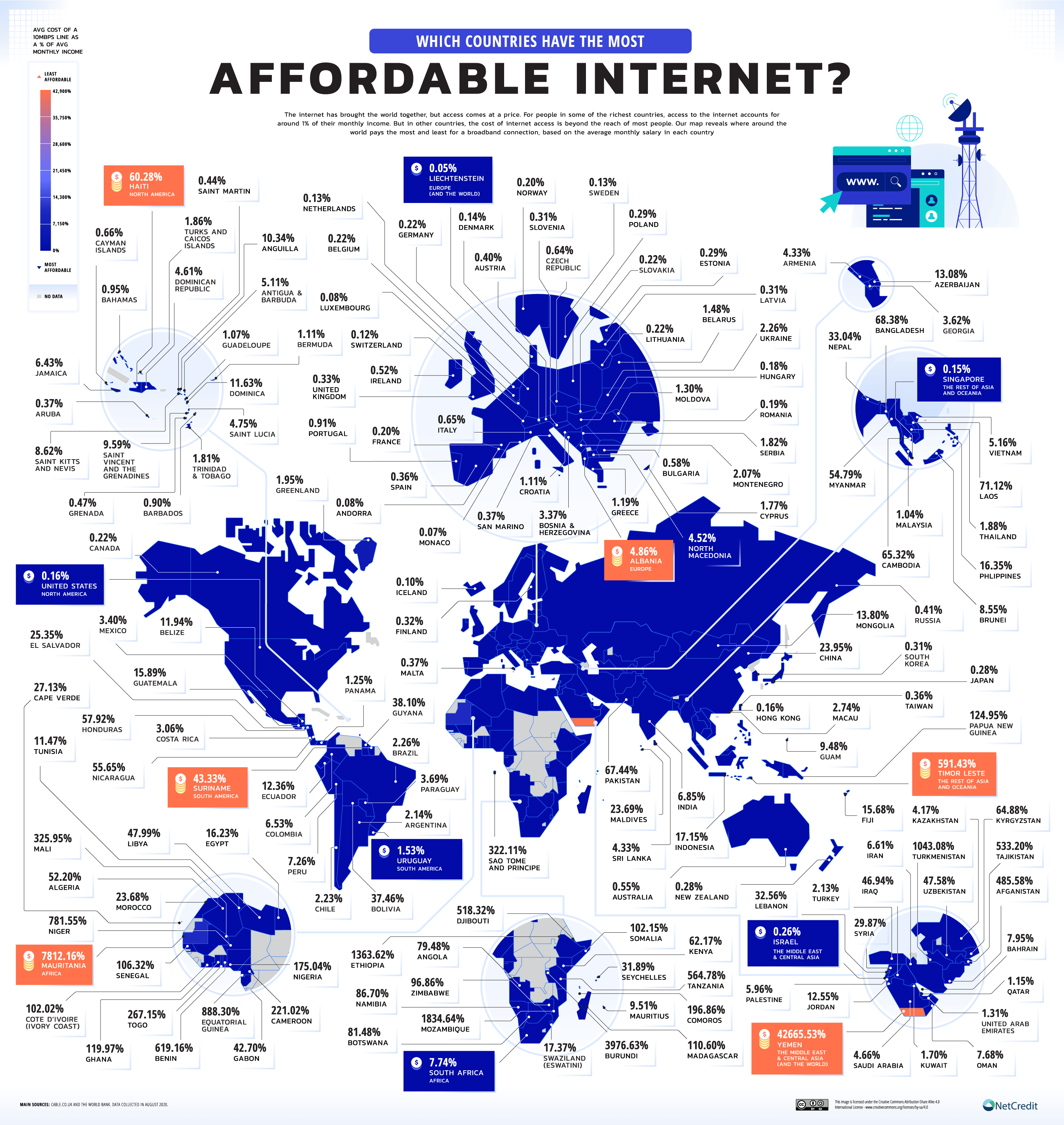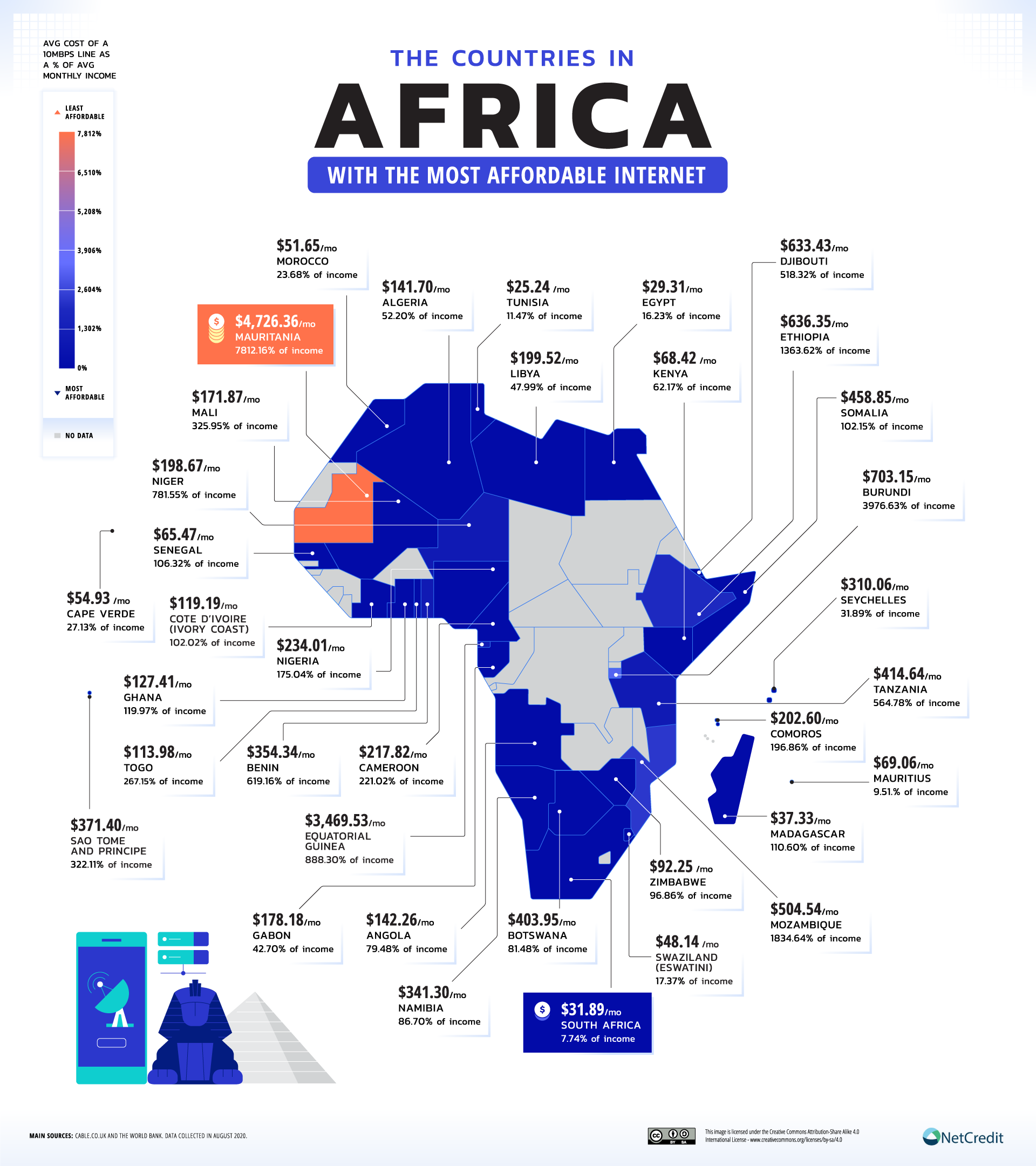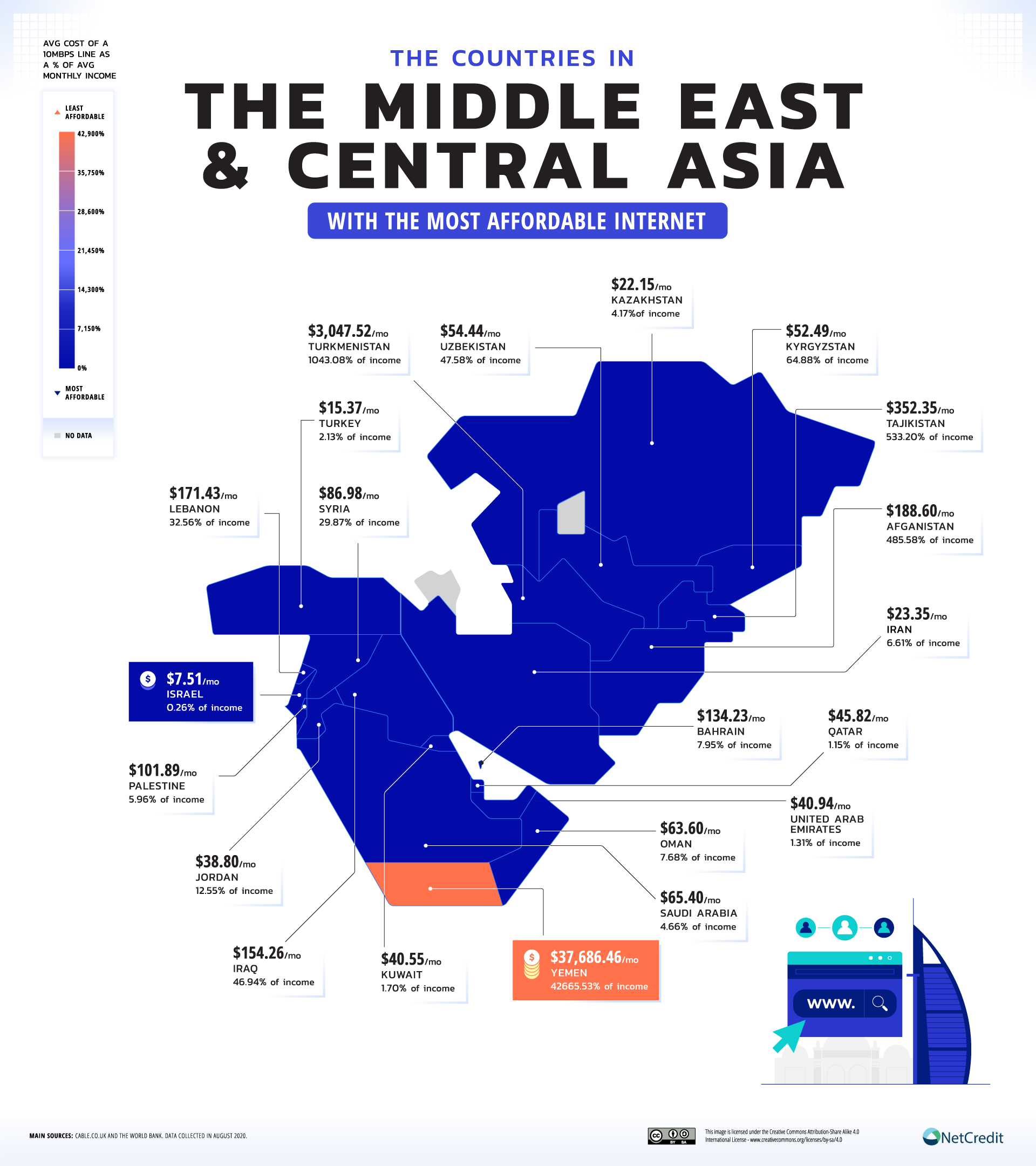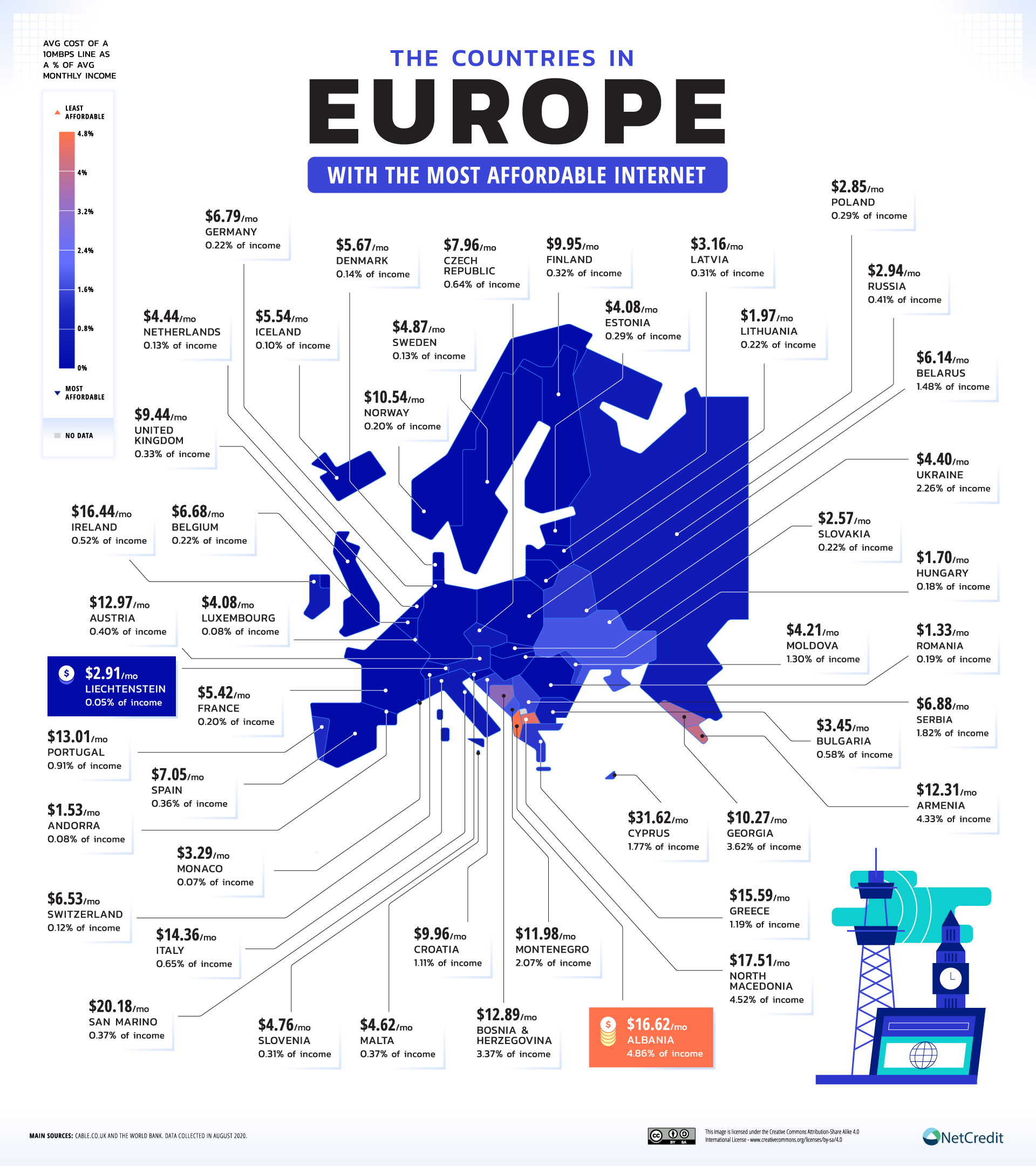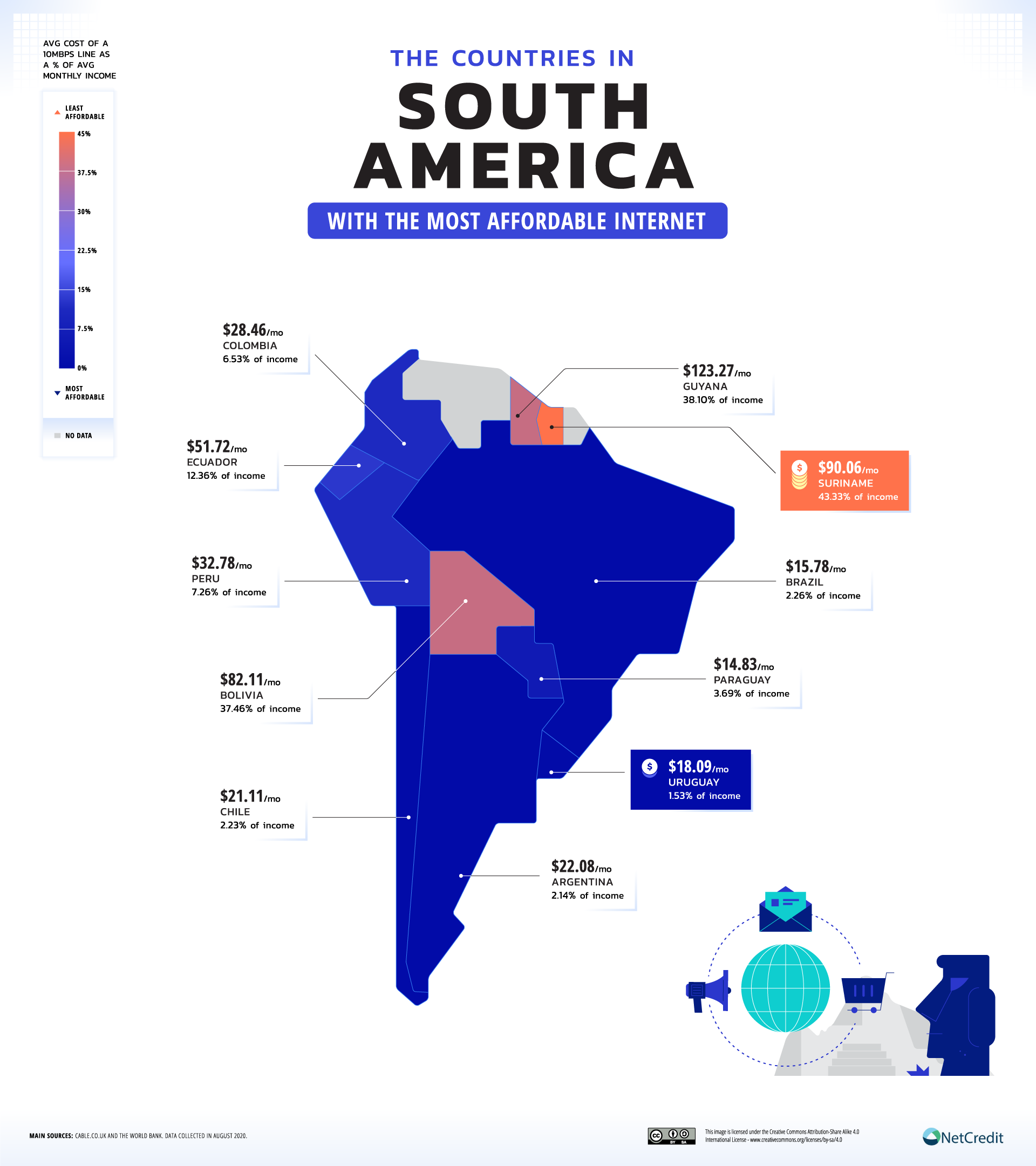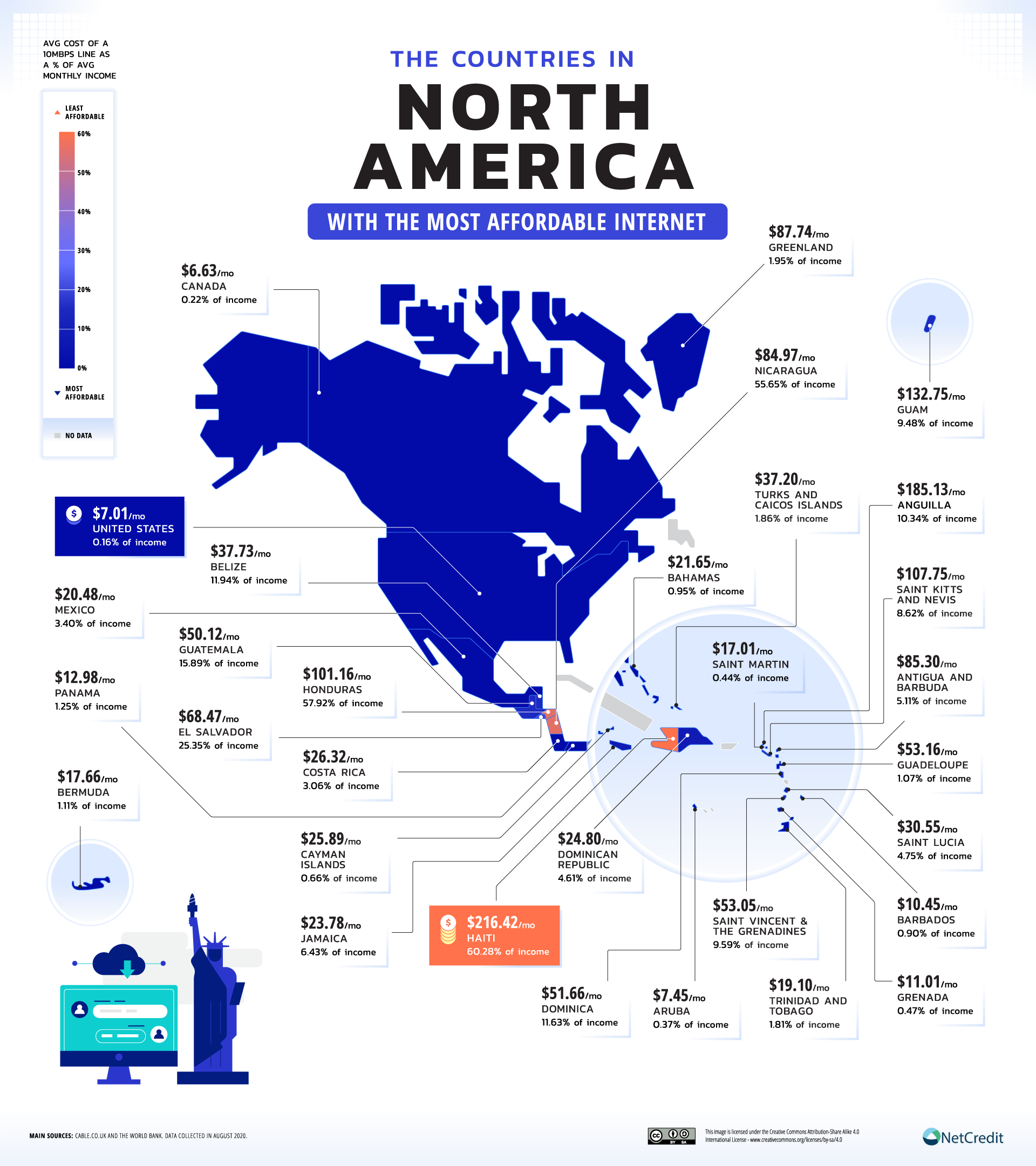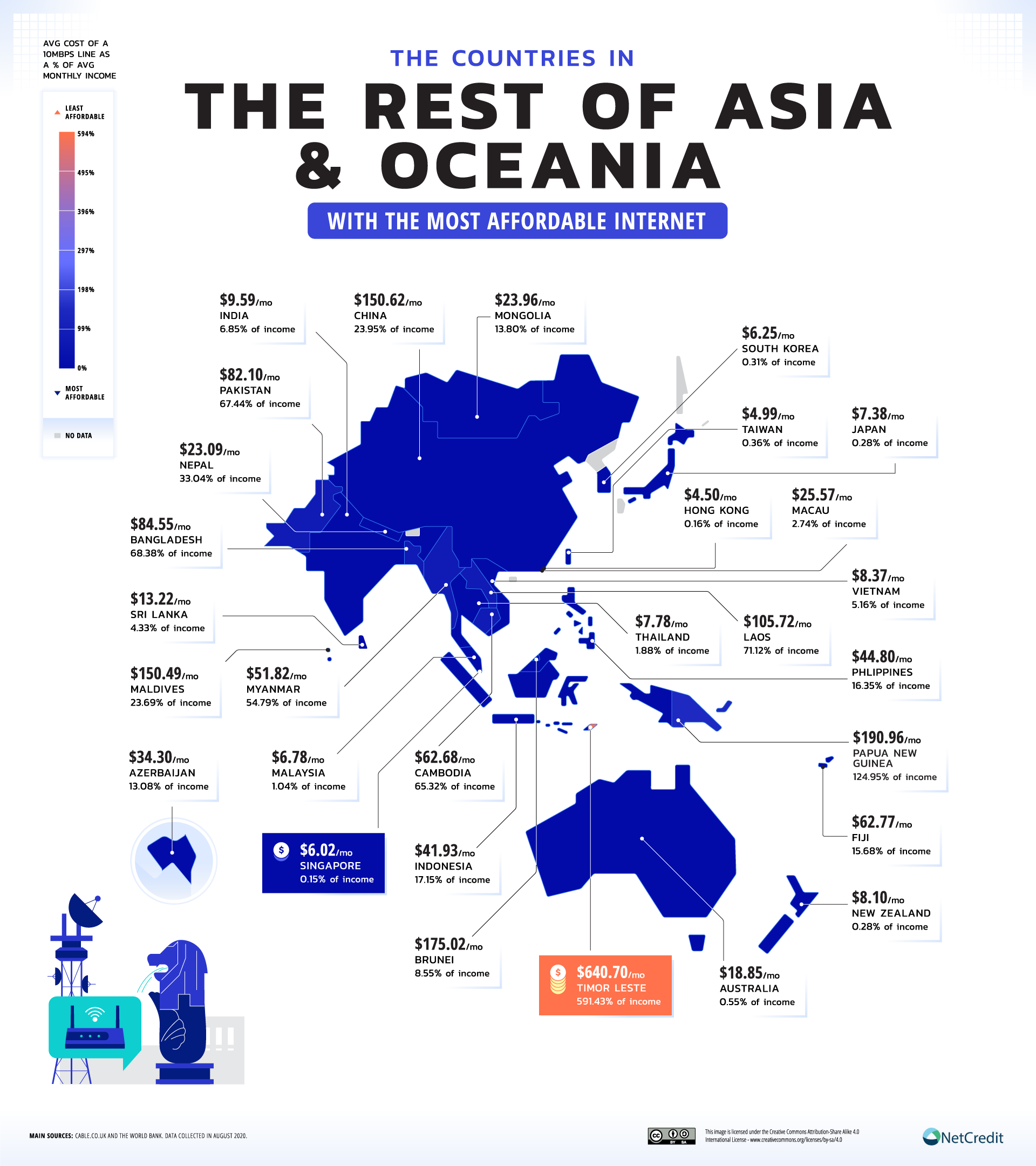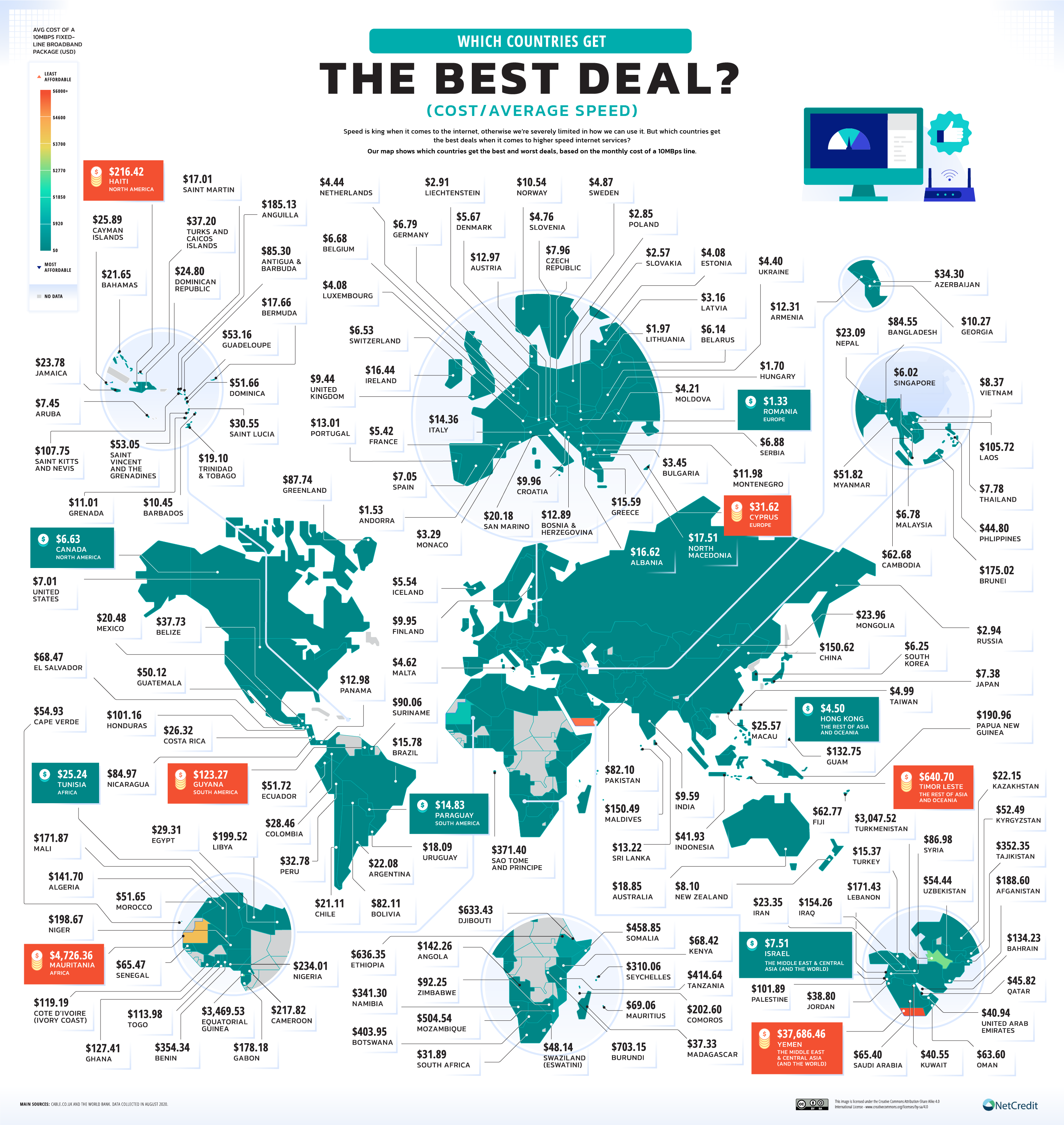Fast and affordable internet is a right, not a privilege. According to a 2016 resolution by the United Nations, the internet is so intrinsic to modern life that ‘open, accessible, and nurtured’ internet access should be protected, and that suppression of free online expression constitutes a human rights violation.
Q3 2020 hedge fund letters, conferences and more
While more than half of the world’s population currently have internet access, many people are still unable to get online. This means they are cut off from vital resources and opportunities such as professional networks and work options, health and education information, community support, and wider communication channels. Being disconnected in this way can have a dramatic impact on quality of life, and represents a ‘digital divide’ between the haves and have-nots.
In different countries around the world, the scale of inequality is clearly reflected in how affordable - or not - the internet is to the general population. NetCredit have collated data on worldwide broadband prices with World Bank data on countries’ average salaries, and produced these infographics to illustrate where the average global citizen is being digitally disenfranchised by inequitable internet provisions.
Global Affordability Targets Are Not Being Met
The Alliance for Affordable Internet suggests that it should cost no more than 2% of the average monthly income to be widely accessible to most people, while others propose a 5% target. However, of the 174 countries in the NetCredit study, only 44 countries met the 2% target, and 77 met the 5% target. That means that the majority of countries with available data are pricing people out of consistent internet access.
Even more shocking is that in a whopping 63 countries the cost of getting online would scrape more than 10% of the average monthly income, and in 11 countries internet access costs more than 100% of the average income. Ten of these countries were in Africa, where resource-poor countries such as Burundi and Mauritania are dependent on subsistence farming and livestock, the average salaries are very low ($60.50 and $17.68 per month), and the cost of internet is prohibitive to all but the ultra rich.
There was no data available for some countries in central and west Africa, which suggests a lack of connectivity in those locations. Of the data that was available, no African countries meet either the 2% or 5% affordability targets. Tunisia comes closest at 6.49% ($14.28 package compared to $220.17 average wage), and only four other African countries have broadband rates lower than 10% of what people earn on average.
Yemen has by far the least-affordable internet of all the countries in the study. The average monthly income there is $88.33, yet a broadband internet package costs an astronomical $2,466.67, which is 2792.50% of that. The Yemeni economy is one of the least-developed in the world, and has been severely affected by civil war and disease. More affordable internet would surely be life-changing in this country.
The Most Affordable Internet In The World
Saint Martin has the most-affordable broadband rates in the study. The average cost of a broadband package in this French collectivity is $57.32, which is just 0.63% of the average salary of $3,165.69. Israel and Monaco are close second and third in affordability, with broadband costing 0.63% of what the average person earns in these countries.
Eight out of the top ten countries for affordable internet are located in Europe, which makes sense considering the EU has pledged to support high speed internet in every household. More than half of European countries meet the 2% affordability target, and only 5 countries slightly exceed the higher 5% target, with Albania offering the least affordable internet access at 6.01% of the $342.10 monthly income.
In North and South America, the Middle East and Central Asia, and the Rest of Asia and Oceania, there is a range of affordability between countries. In each region there are countries where broadband costs fall within affordability targets, such as Canada (1.14%), Argentina (1.13%), Palestine (1.87%), and Singapore (1.11%), but also countries where costs are well beyond affordable levels, such as Nicaragua (37%), Suriname (19.16%), Turkmenistan (76.9%), and Timor-Leste (52.92%).
A Reflection Of Inequality On Global And Local Levels
The data clearly shows that there is a big difference between how accessible the internet is in some of the world’s strongest economies, compared with countries where a lack of infrastructure or vast disparity wealth prohibit all but a wealthy minority from getting online. However, even in countries with broadband internet rates that sit comfortably within the 2% affordability target, there are people who fall down the digital divide.
In the US, for example, a broadband connection costs 1.17% of the average salary, yet educators are campaigning for more equitable broadband provisions. They argue that connectivity is a ‘basic need within education,’ and that many of the most vulnerable and marginalised people are suffering due to lack of internet access. It’s important to remember that 2% of the average salary is still too expensive for many people on very low incomes who might benefit from the opportunities and resources available online.
Good internet provision requires better and more consistent infrastructure, access to devices, support for digital literacy, and a strong and affordable broadband supply. More equitable internet access isn’t just beneficial to individuals, but also to the global economy. Connectivity is now more important than ever, so people shouldn’t be priced out of their human rights.

